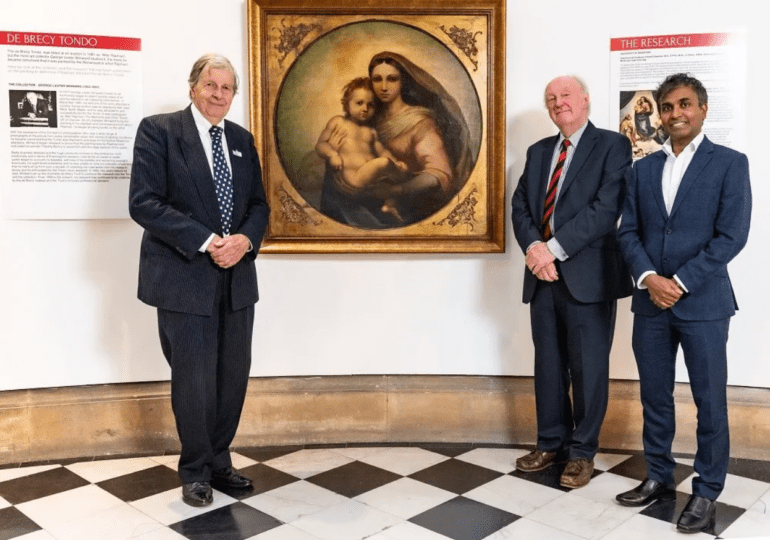TL;DR:
- AI was used to attribute a disputed painting to Raphael, generating widespread praise.
- Recent study challenges AI attribution, raising doubts among experts.
- The painting in question, the de Brécy Tondo, has an uncertain origin date.
- Similarities between the de Brécy Tondo and Raphael’s Sistine Madonna prompted AI analysis.
- Nottingham and Bradford researchers claimed a strong likelihood that both paintings were by the same artist.
- The de Brécy Tondo was publicly displayed in July following AI confirmation.
- Carina Popovici’s contrasting AI analysis suggests an 85 percent chance it’s not Raphael’s work.
- Timothy Clifford, an art expert, expresses skepticism about AI’s reliability in art attribution.
- The art world faces a debate between tradition and technology in preserving its treasures.
Main AI News:
When the revelation surfaced that artificial intelligence had played a pivotal role in confirming the attribution of a disputed painting to the master artist Raphael, it was met with widespread acclaim in publications worldwide. However, a more intricate narrative has since emerged, casting doubts on the precision of this attribution. A recent study by one scientist presents a starkly different perspective from the one that originally certified Raphael as the creator, leading two museum professionals to question the reliability of AI in this context.
The painting in question, titled the de Brécy Tondo, is shrouded in uncertainties, including its origin date. Some art historians assert that it is a Victorian Era replica, created over three centuries after Raphael’s demise. Conversely, others argue that it indeed hails from the Renaissance era.
Adding to the complexity is the uncanny resemblance between the composition of the de Brécy Tondo and a renowned masterpiece with undisputed Raphael attribution—the Sistine Madonna (ca. 1513) housed in the Gemäldegalerie Alte Meister in Dresden, Germany. The de Brécy Tondo features a similar depiction of Madonna and child, albeit without the accompanying angels and additional figures.
Researchers in Nottingham and Bradford undertook an ambitious endeavor, utilizing AI to study the Sistine Madonna. Their findings suggested a remarkable 97 percent similarity between the female figures and an 86 percent resemblance between the infant depictions in the two artworks. Consequently, they boldly asserted that these paintings were “highly likely to have been created by the same artist.”
Following the release of their findings in January, the de Brécy Tondo was unveiled to the public for the very first time in July at the Cartwright Hall Art Gallery in Bradford, England—a stone’s throw from where the research had taken place. In an official statement, the gallery proudly proclaimed that “artificial intelligence-assisted computer-based facial recognition conclusively matched the faces in the paintings with those in Raphael’s renowned altarpiece.”
However, Carina Popovici, a scientist affiliated with the Swiss company Art Recognition, vehemently contests these findings. Relying on research conducted through algorithms, Popovici posits an 85 percent likelihood that the de Brécy Tondo is not the handiwork of Raphael.
When questioned about his perspective on AI’s role in attributing the de Brécy Tondo to Raphael, Timothy Clifford, former director general of the National Galleries of Scotland, expressed profound skepticism. He asserted that AI is “terribly unlikely to be remotely accurate” in matters concerning the attribution of artworks, emphasizing the inherent dangers of relying on mechanical means for such determinations.
In response to Popovici’s contrasting study, a spokesperson for the Bradford council mused, “It’s the battle of the AIs, I guess.” The art world now finds itself at a crossroads, navigating the complexities of tradition and technology in the pursuit of understanding and preserving its most cherished treasures.
Conclusion:
The controversy surrounding AI-attributed art underscores the ongoing debate within the art market. While technology promises new avenues for authentication, the art world must carefully navigate the potential inaccuracies and implications of relying on AI for such critical determinations. This scrutiny serves as a reminder that human expertise remains indispensable in the realm of art authentication and attribution.

